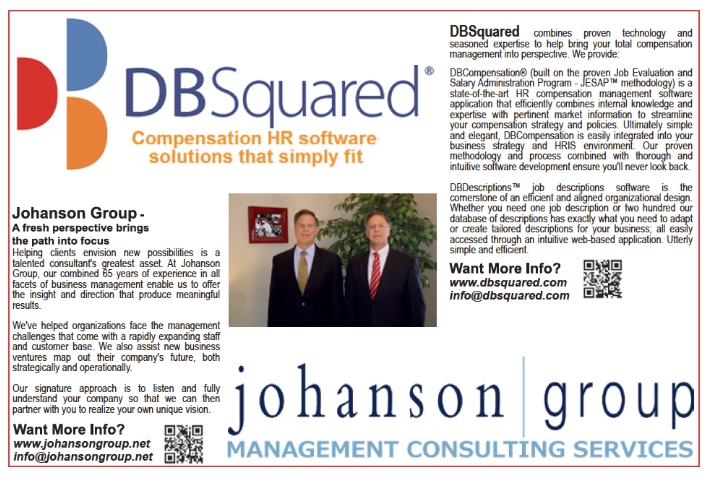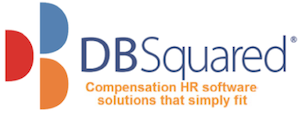By Blair and Bruce Johanson
There are two base assumptions that come into play when organizations start considering doing something different with regard to compensation and company performance levels. The first is base salary can only go so far to motivate employees in driving revenues and net income. Most organizations tell their employees that their regular pay is based on accomplishing the job duties and expectations as outlined in the job description. The second is base salaries have increased by roughly 3% per year for the last ten plus years and these increases don’t send the right message to cause employees to max out on their performance. We have worked with all types of business and organizations around the country for the past 35 years and have found that the best way to drive results to the next or optimal levels is through individual/team performance-based incentive compensation plans.
Incentive compensation plans have been around for several years, but they have typically been reserved for upper management. One of our client verticals is the financial industry and mainly banks with assets under $15 billion. We have assisted several banks around the country since the mid-80s with developing performance-based incentive/team compensation plans for executive management and lending officers. Over the past ten years, we have expanded incentive compensation all the way down to the hourly bank positions such as customer service/new accounts representative, teller, accounting clerk, loan assistant, courier, etc. I remember words from a prominent Arkansas bank CEO back in 1987 who said, “What gets measured, get rewarded.”
Three years ago, we worked with a bank and created over 40 individual performance-based incentive compensation plans from Chairman of the Board down to Courier and this bank’s assets have grown over 40% with net income near the same level. The President/CEO indicated that they hadn’t experienced these results prior to the implementation of the incentive compensation plans. Another one of our bank clients that we have provided HR/compensation services to since 2008 has grown organically from $400 million to $1.7 billion and they have individual/team performance-based incentive plans and stock option award plans for around 60 salaried employees.

Below is an example of a common individual/team incentive compensation performance-based plan for a loan assistant. The important aspects of this plan include base salary, performance metrics, factor weightings percentages and incentive compensation payout levels of Threshold, Target, Target Plus and Maximum. This plan is created, approved and communicated before the start of an organization’s fiscal or calendar year to allow an employee to take advantage of the whole year to accomplish the performance metrics at the optimal level. In addition, quarterly or at least semi-annually, feedback of where the employee is to date and year-end projections helps to keep the incentive compensation plan in front of the employee.
As you can see, the Loan Assistant incumbent has the potential to generate a minimum of an extra $2,000 (5% of base salary) given that they hit the threshold levels for all five performance factors to a maximum level of $8,000 (20% of base salary). In this example, the Loan Assistant hit one Threshold, one Target and three Target Plus and no Maximums. Total incentive compensation bonus payout for 2019 was $4,800 (12% of base salary).
The performance factors can stay the same or change each year depending on what the organization is seeking to accomplish and how the economy is doing. The number of performance factors should be between three and seven. You want at least three to create sufficient motivation in a few areas and avoid too many factors as it tends to cause an employee to be frustrated having to keep up or push on too many fronts. The factor weighting percentages for the performance factors can be equal or you can place more weight on meatier or items that create best results desired around growth, net income and quality control basis. The payout levels vary based on the level of employee within the organization. We don’t recommend payout levels below 5% or above 50%. As a rule of thumb, executive level tends to have payout levels in the range of 30% to 50% of base salary, directors and managers at 20% to 40%, supervisors at 10% to 30% and hourly 5% to 20%.
It is important to create an incentive compensation plan pool at the beginning of the plan year. The pool figure is typically 5% to 15% of net income and budgeted at the Target level. This amount is set back through monthly accruals. If your organization has a board of directors, we recommend that the Board approve the plan before implementation and the Board or Compensation Committee of the Board oversees the plan during the year and year to year.
Recently, we had a public utility client that wanted to switch from a yearly discretionary bonus plan to an individual/team performance-based incentive compensation plan. We started with the CEO and Vice President positions the first year with Board approval. The success of the first year was such that the Board approved moving to the manager level. Given the same success, the client will probably move down to the supervisory level the following year. Phasing in a performance-based incentive compensation plan is a smart way to go as this entity has done.
Currently, we are starting a project with a mortgage lending group where top management has been compensated well for growth, but the quality control side of the business is weak. The goal/outcome here will be to develop the right objectives with incentives to improve internal controls and turn this part of the business around.
We have created individual/team performance-based incentives plans for other groups including retirement facilities, airports, manufacturing, transportation/logistics, medical, CPG vendor groups, insurance, and non-profit groups. As mentioned at the top of this article, we are in a time where base salary can produce only so much from your employees and one of the best ways to drive optimal results is through individual/team performance-based incentive plans.
HR Professional Magazine will be hosting and sponsoring a complimentary one-hour SHRM CEU credit webinar on September 17. This webinar will take a deeper dive into individual/team performance-based incentive plans with Blair and Bruce Johanson leading this worthwhile and timely workshop with time for questions and answers. You can register by going to www.hrprofessionalsmagazine.com.

